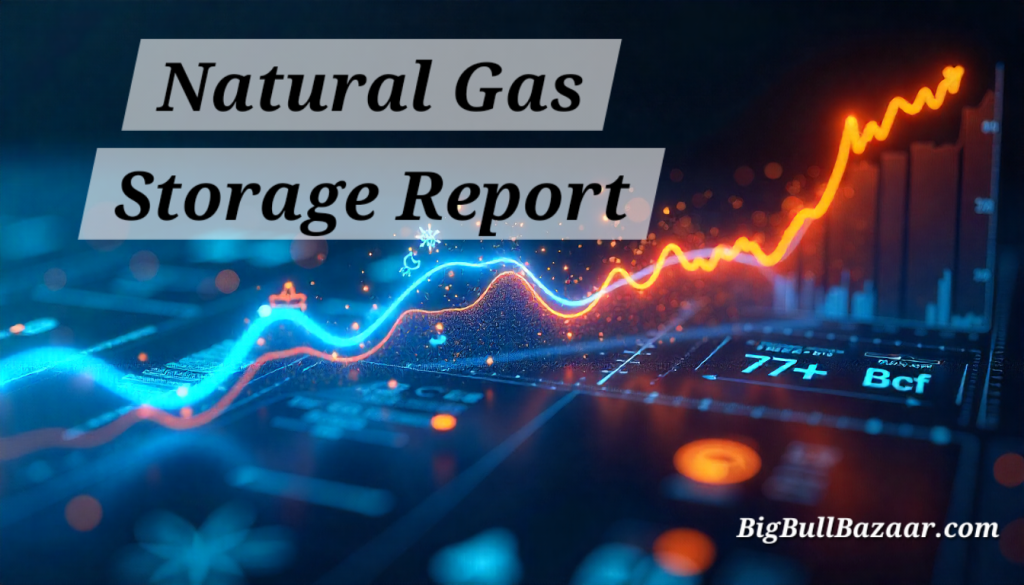Beyond the Headlines: A Deep Dive into the Natural Gas Inventory Report and Its Ripple Effects
The weekly Natural Gas Storage Report, released by the U.S. Energy Information Administration (EIA), is more than just a number—it's a vital pulse check for the entire energy complex. The latest data, showing a build of 74 billion cubic feet (Bcf) for the week, offers a compelling narrative about the delicate balance between supply, demand, and future market expectations. Let's break down what this means and why it matters to traders, investors, and the economy.
The Immediate Takeaway: A Slightly Bullish Surprise
The market's immediate reaction to the 74 Bcf injection was a nuanced one. On the surface, the build came in slightly above the average analyst forecast, which clustered around +71 Bcf. A larger-than-expected injection typically suggests weaker demand or stronger supply, which is bearish for prices.
However, natural gas futures held steady and even ticked higher. The reason lies in the context. This week's build of 74 Bcf represents a significant slowdown from the previous week's injection of 87 Bcf. This deceleration in inventory growth was the real story, signaling a potential tightening in the market's fundamental balance and providing enough support to offset the "miss" on the forecast.
The Core Drivers: Reading Between the Data Lines
This weekly change isn't happening in a vacuum. It reflects a dynamic interplay of several powerful forces currently shaping the natural gas landscape.
· The LNG Export Engine: Record levels of natural gas continue to flow to U.S. liquefied natural gas (LNG) export terminals. Strong global demand, particularly from Europe and Asia, creates a persistent drain on domestic supplies, providing a firm floor under prices.
· Robust Domestic Production: U.S. dry gas production remains at or near all-time highs. This ample supply is a key factor that caps excessive price rallies, ensuring that any surge in demand can, for now, be met.
· The Weather Wildcard: We are in the heart of the autumn "shoulder season"—a period of mild temperatures where demand for both air conditioning and heating is at its lowest. This weather-induced demand slump is the primary reason we see large inventory builds at this time of year. Any forecast of an early cold snap, however, can quickly reverse this trend.
The Broader Commodity Market Impact
The implications of the natural gas inventory report extend far beyond the futures pit. Natural gas is a foundational commodity, and its price reverberates across several sectors.
· Electricity Prices: As a primary fuel for power generation, the cost of natural gas is a direct input for electricity prices. A sustained price increase here would inevitably trickle down to consumers and businesses.
· Industrial and Agricultural Costs: Industries that use natural gas as a feedstock for fertilizers, chemicals, and plastics are highly sensitive to price fluctuations. Higher gas prices directly translate into higher production costs, which can impact global food prices and manufacturing.
· Macroeconomic Indicators: As deep research into commodity markets shows, energy price volatility has a measurable impact on GDP and inflation metrics. Policymakers at the Federal Reserve and in international organizations closely monitor these reports to gauge economic stability.
The Future Outlook: What to Watch Next

For traders and market watchers, the weekly inventory number is a key data point, but the trend is your friend. The market will now focus on:
· The Trajectory of Builds: Will the slowdown in injections continue? A consistent trend of smaller builds will signal a rapidly tightening market.
· Early Winter Forecasts: The first EIA report following a major cold-weather event will be a market-moving catalyst.
· LNG Export Dynamics: Any unplanned outages at LNG facilities or a surge in international buying will immediately impact domestic storage levels.
Conclusion: Data as a Compass
The +74 Bcf build is a perfect case study in modern commodity market analysis. It demonstrates that the headline number is just the beginning. True insight comes from interpreting that data within the context of slowing weekly changes, the relentless pull of LNG exports, and the constant hum of domestic production. For anyone with a stake in the energy markets, understanding these layers is not just an advantage—it's a necessity.
By staying informed on these reports and the deeper trends they reveal, investors and businesses can navigate the volatile but opportunity-rich landscape of the natural gas market with greater confidence.






Leave a Reply